Hey there, fellow music enthusiasts and piano prodigies! If you’ve ever found yourself pondering over those mysterious lower notes on the piano, fear not! Let us learn how everything about Bass Clef and get your piano playing skills going!
The Development of Bass Clef
The foundations of Western music were laid in the medieval castles of the 9th century. Composers and scribes faced the challenge of notating the vast range of sounds produced by various instruments. There was need for a symbol to represent the lower-pitched notes.
The Bass clef entered. It is developed from the Mystic letter “F”. This simple twist of penmanship laid the groundwork for the bass clef’s future reign.
With the rise of stringed instruments and the popularity of the piano-forte, the bass clef found its place in ensemble music during the Renaissance and Baroque periods during the fourteenth to seventeenth centuries. Musicians were able to explore the depths of the musical spectrum and the bass clef became an indispensable companion.

Did You Know?
The Bass Clef is also called as the F-clef because its Symbol starts on F line on a staff.
The bass clef is still a powerhouse of musical expression in the contemporary world. It is typically utilised pulse the rhythm of any kind, Symphonic to Electronic Music
The Bass Clef: Your Musical Compass
You hold the keys to a world of musical wonder now that you’ve seen the history and influential journey of the bass clef. Let us look at the importance and its features.
Just like the treble, you can find the bass clef at the bottom area of a staff. The bass clef is similar to the strong foundation of a musical composition in that it is located in the upper range. The low-frequency notes add richness, depth, and rhythm to the overall melody. Learning how to read bass clef notes has always been an essential task if you’re a pianist or just a music enthusiast.
The Symbol
The Bass Clef symbol looks like a ‘C’ that’s flipped inside-out. It has two dots on its right side top and bottom. We can see a line that runs between the Inverted C. “Bass F is the note that falls on this line, the first F left of middle C.
There is aline that runs right in between the symbol of Bass Clef. This line is the Note F and it is the first F note found below the Middle C.
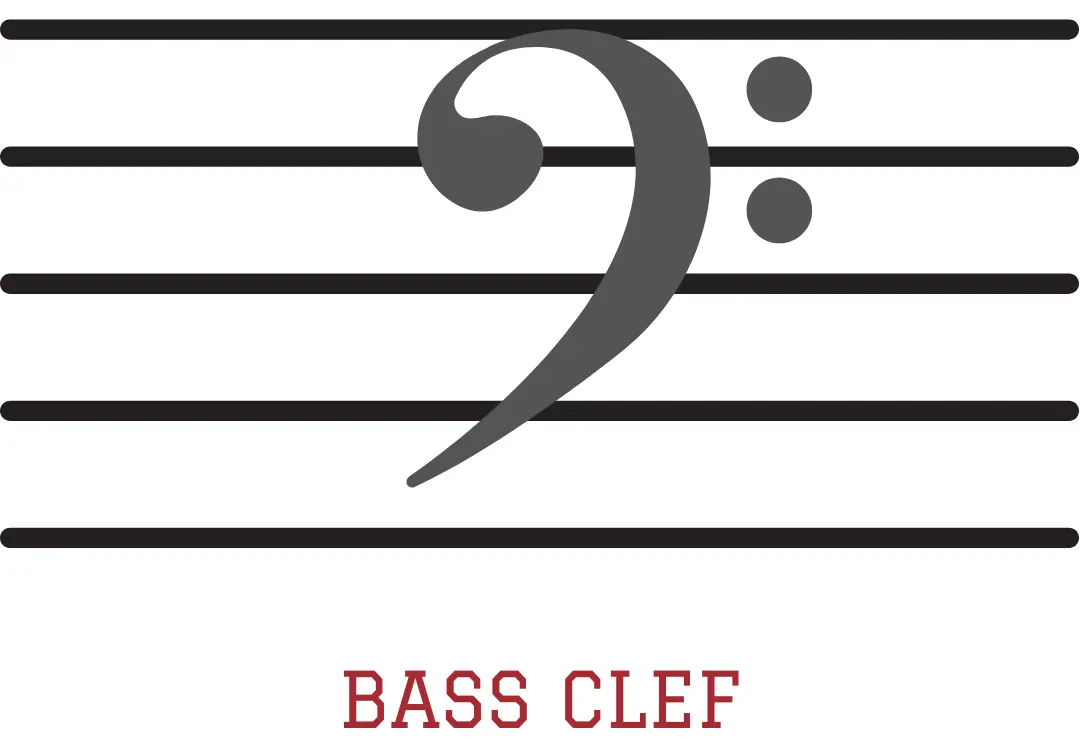
Befriending the Bass Clef All-Stars: The Notes
It’s time to meet the stars of the bass clef show. The groovy symbols are the keys to the low-frequency magic on the piano. We’ll guide you through the note names and even throw in a few memory hacks to make sure you never miss a beat.
Line and Space Notes:
We have learnt that a treble clef would have 5 lines and 4 spaces. Additionally, you can find that the Bass Clef indeed has 5 lines and 4 spaces.
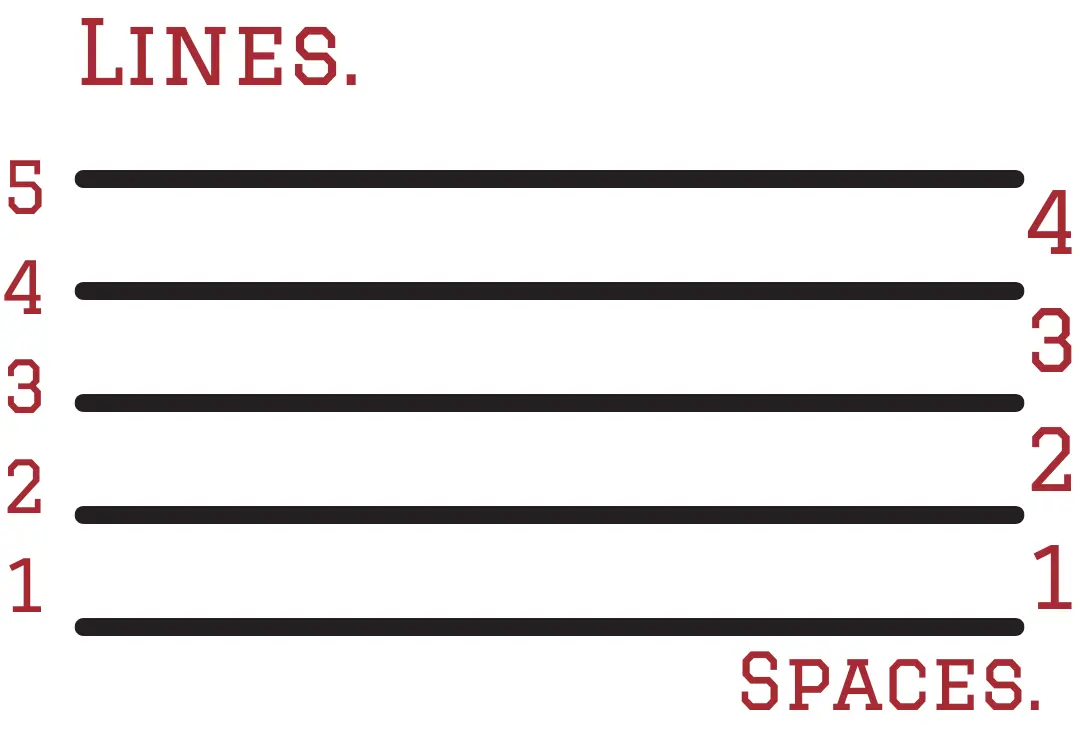
The notes on the Lines would be G, B, D, F and A. A mnemonic that you can use to remember these notes:
Green Buses Drive Fast Always
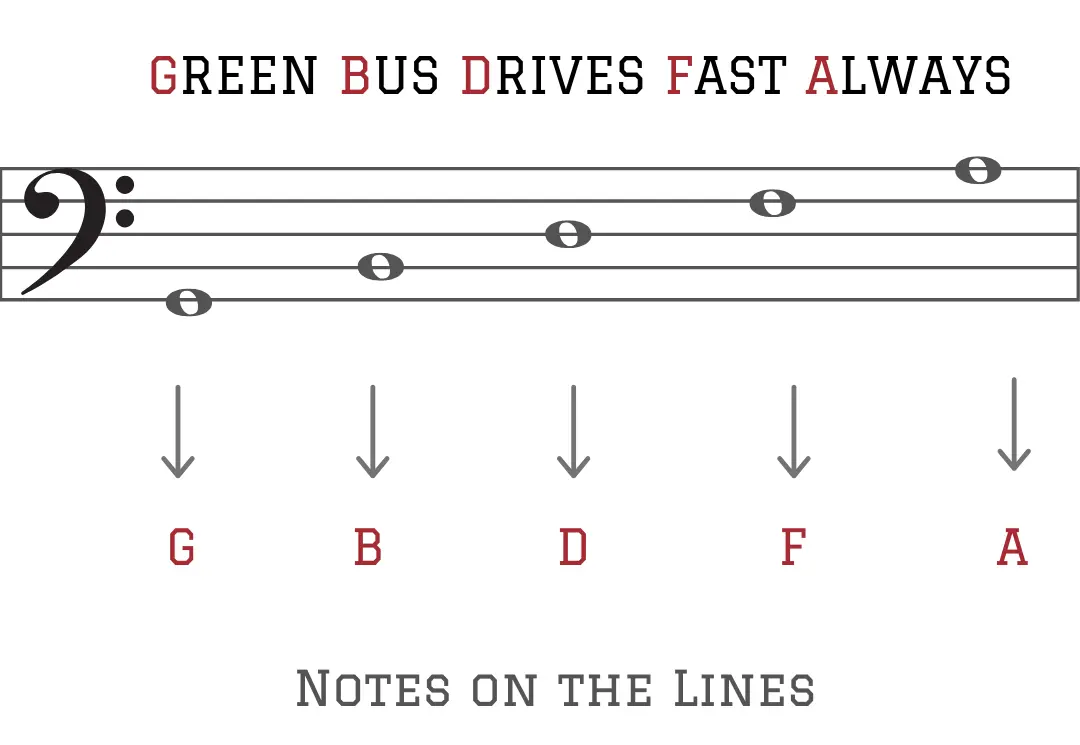
Just like the above mnemonic, another trick to remember the Notes of the spaces would be,
All Cows Eat Grass.
Like the mnemonic, A-C-E-G are the noted of the spaces of a Bass Clef.
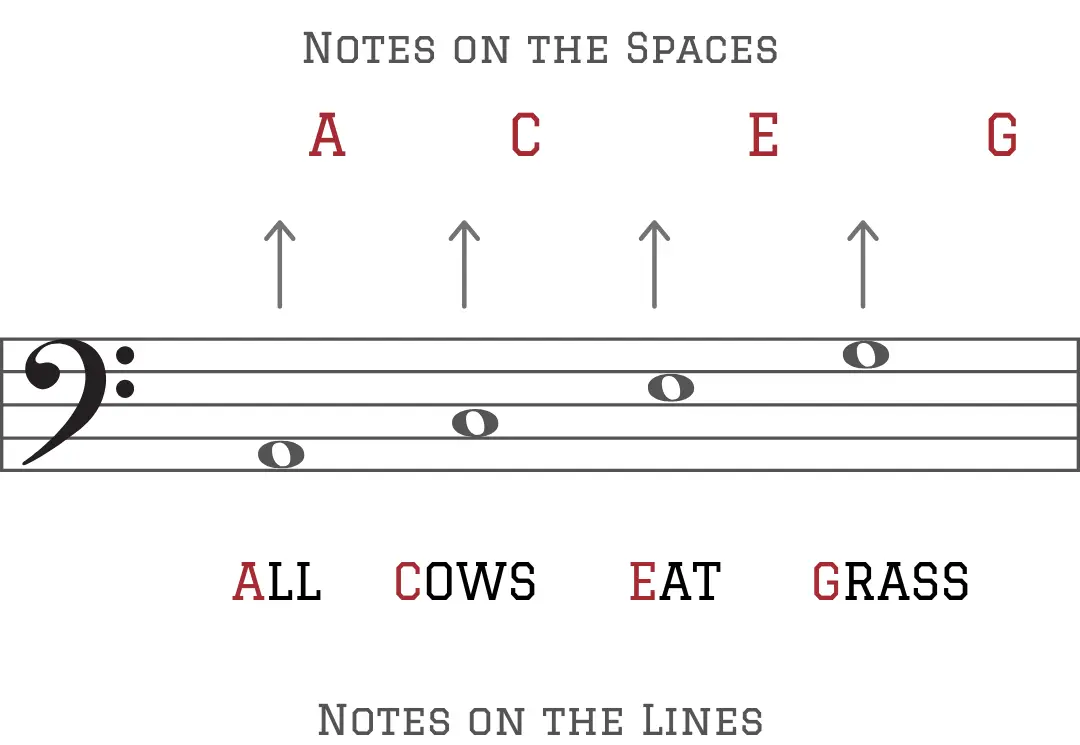
You can even make up your own phrases to remember these notes! Keep in mind that the phrases start from bottom to top.
A Trip to the Bass-ic Neighbourhood: Ledger Lines
Like our lives have different levels, the bass clef does as well. You will meet their hip friends called “ledger lines” when you encounter notes outside of the staff. We’ll show you how to navigate between the notes above and below the staff in this neighbourhood.
There are notes beyond the five lines and four spaces in some musical pieces. These lines are called ledgers. The short lines drawn above and below the staff to extend octaves – Ledger Lines. These lines and spaces of the bass clef are the same in both directions. For instance, the higher the ledger line, the higher or towards the right that note is on the piano while the lower the ledger line, the lower or towards the left it is on the piano.

Reading Ledger Lines Going Up:
To read the ledger line notes from line 5, simply use the phrase for the space notes in the following way:

Did You Know?
When a piece of Music is written on bass clef, it is played on the left hand on the piano.
All – Line 5
Cows – Ledger Line 1
Eat – Ledger Line 2
Grass – Ledger Line 3
The First Ledger line over the staff is Middle C.
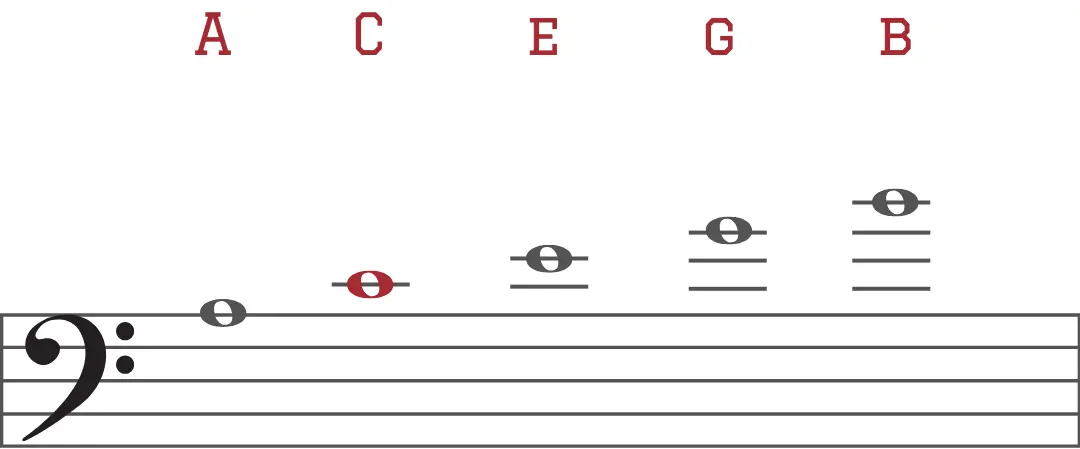
Reading Ledger Lines Going Down:
To read the ledger lines going down from line 1, use the phrase for the space notes BUT reverse it!
Grass – Line 1
Eat – Ledger line 1
Cows – Ledger line 2
All – Ledger line 3
To read the ledger space notes, learn the ledger line note names and count up or down from the lines to figure out the space note.
For example
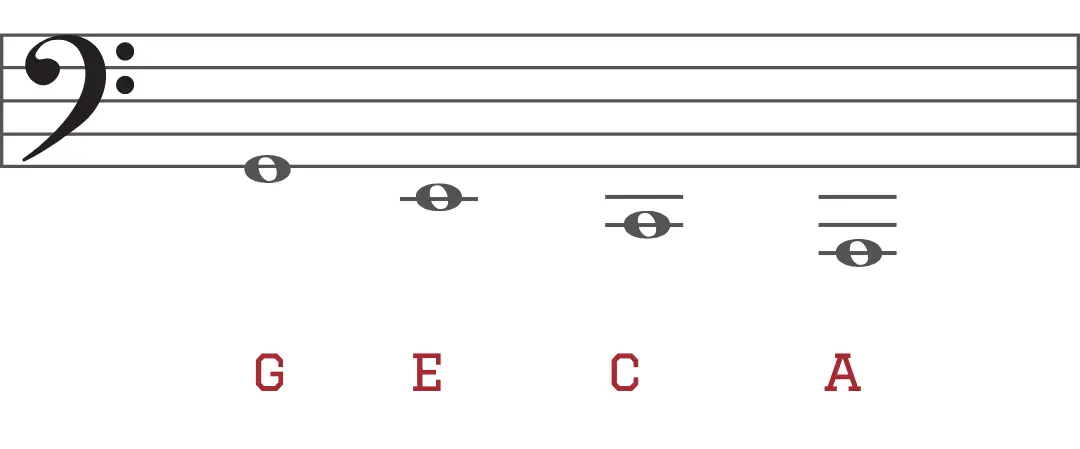
To read the space note above the first ledger line (above the staff), we’ll first read the note that falls on the first ledger line which will be C. Then, we just count one step up so the note that falls on the space above the first ledger line will be D.
As you encounter ledger lines in your musical journey, keep this principle in mind, and you’ll confidently read notes beyond the standard staff range in the bass clef!
Let’s test ourselves!
Set A
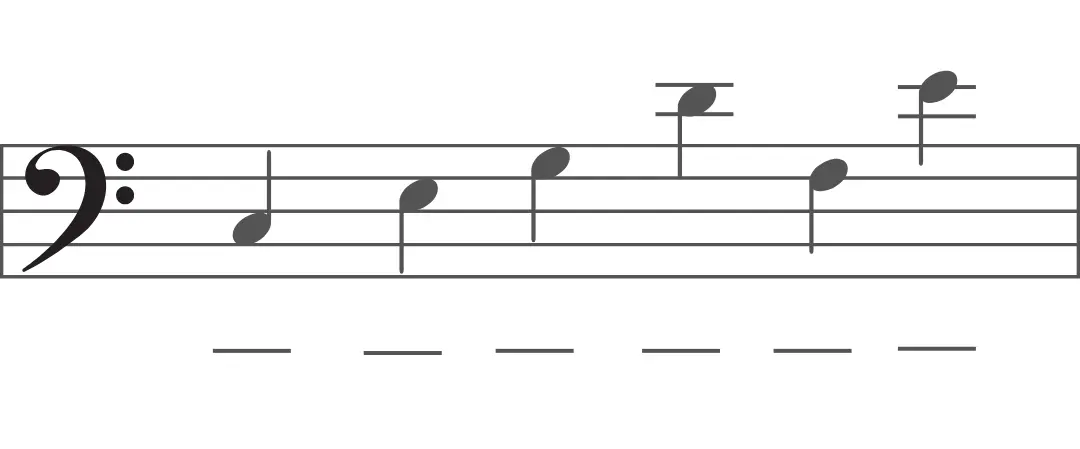
Set B
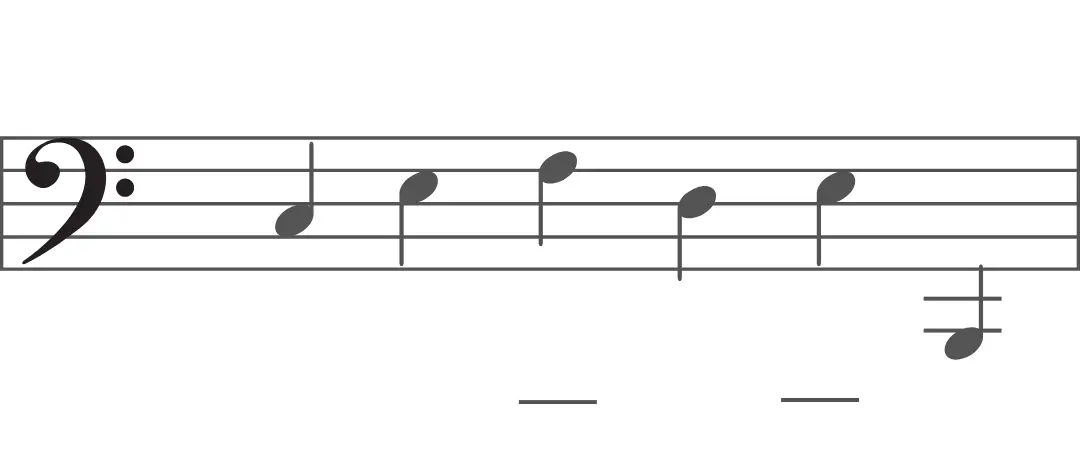

Did You Know?
A piano piece called Pink Panther by Henry Mancini is written only with the Bass Clef notes!.
Exploring Bass Dominant Pieces
Although most piano pieces focus more on the treble clef, there are quite a few piano pieces that have a stronger bass than treble that are typically characterised by their emphasis on lower register notes and melodies. These pieces often create a rich and deep sound, displaying the piano’s lower octaves. Few examples of rich Bass-line melodies,
Listen to this First movement of Beethoven’s Moonlight Sonata. It is popular for unforgettable bass melody.
I was in awe of the Rachmaninoff’s Prelude in C# Minor because of the poignant chords written in the low register.
These few pieces are just a starting point, and there are many more compositions that explore the piano’s lower register with strength and expression. Enjoy exploring the depths of the piano with these works!
As with any new skill, practice is key!
Start with simple melodies and exercises in the bass clef. Gradually increase the difficulty as you become more proficient. With time and dedication, reading bass clef notes will become second nature.
So, musical maestros, are you ready to conquer the bass clef and unleash your piano groove? Whether you’re a beginner pianist or an experienced player, this guide will have you navigating the lower realms of music with finesse and flair. Embrace the bass clef and get ready to rock the piano like never before!
Happy reading!
Answers:
Set A
C E G D F E
Set B
F E
Interested in learning Piano or keyboard, check more details on Live 1 to 1 Online Piano Classes offered by our qualified Piano teachers.


































